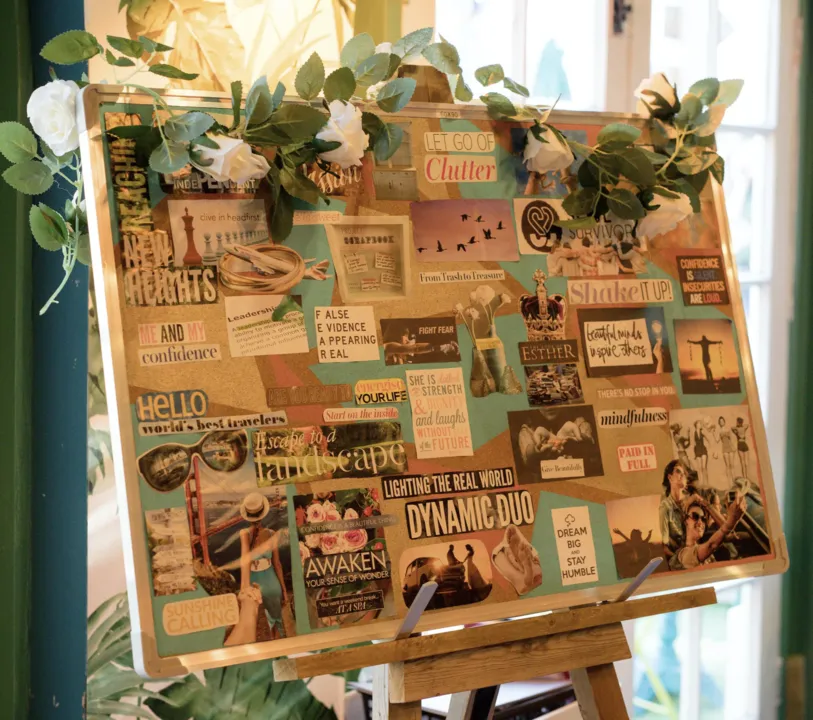
Why Vision Boards Work
What a Load of Rubbish!
When I was a drinker, I would 100% have dismissed the idea of having a vision board as complete woo woo nonsense. It would have been firmly in the ‘flaky raki’ category and I may even have gone so far as to mock the idea.
Becoming Open Minded
Like so many of my clients, I’ve found that quitting the drinking has had a profound effect on my outlook on life. Once I’d got over the shock of being faced with 24/7 clear headed reality, I suddenly found I had a lot more time to think. To think, to read, to listen to podcasts and to immerse myself in aspects of wellbeing that I’d never previously been interested in at all. OK, that’s not quite true: I was interested in being healthy, I tried to eat well and exercise, but I knew that drinking 3 bottles of wine a week was undoing all of that, so my aim was, at best, ‘offsetting’ the damage. With no wine going in, the possibility of actually getting healthier suddenly emerged and I found I wanted to learn more and more.
Science Meets Woo Woo
It was really as a result of this new curiosity that I started to learn about how some of the most ancient ideas in our society are now being backed up by neuroscience. For example, it’s long been known by Tibetan Monks that mediation promotes mental and physical health, but it’s only very recently that science has started to be explain why. I’m fascinated by this topic and am devouring books, Ted Talks and podcasts so that I can bring the latest research and thinking to my 101 Days to Sober clients.
Could it be Magic?
No! It's science! I’ve been exploring the evidence for why vision boards work, as well as looking at reasons why they sometimes fail. With just a few adjustments in mindset, language, and intention, we can set ourselves up for the best possible chance of success in reaching our goals, using tools such as guided visualisations, vision boards and meditation.
Top Tips
Cutting and pasting manually is best. We use different parts of our brains for computer work compared with manual work. The vision boarding process will work better if you do it the old fashioned way, and cut and past from magazines. If you can't find enough pictures, use google to find the pictures you want and then print them and cut them out - a modern day compromise!
Put the vision board in a place where you will see it daily. Then, when you've stop noticing it daily, move it to a new location where you'll see it daily. We need to be reminded of our goals in order to keep working towards them.
Reframe thoughts around 'if' things might happen (or 'if only' things would happen) to 'when this happens'. Tell your subconscious mind, "Bearing in mind that x-y-z is going to happen, these are the things that I need to do, and how I need to be."
Visualise in as much detail as possible the intentions that you have set out on your vision board. Spending just 5 minutes a day peacefully visualising your intended outcomes, you will significantly increase your chances of achieving them.
Keep your visions board up to date. An absolute minimum is once per year for an overhaul of the pictures. As you achieve more and more of the intentions that you set, you'll need to keep updating your board to keep moving forwards.
The conclusion: it’s definitely not woo woo, it’s science and it works.
Fancy trying it out for yourself? Contact me to schedule a free 30 minute exploration session and let’s work out the best way to help you find joy by resetting your relationship with alcohol.

© Choose Sunrise Limited 2022-2023 All Rights Reserved
Choose Sunrise Limited
Registered Company 14062933
M (+44) 07478 278351


